When it comes to ecommerce SEO strategies, they all have the same goals:
- Increase organic website traffic
- Increase conversion rate
- Increase revenue
So this means getting to the top of the search results and sending qualified traffic to the ecommerce website.
Anyone new to the eCommerce world will probably find this a little daunting… But it doesn’t need to be! I am going to take you through the most effective eCommerce SEO strategies you can use to give your online store a boost up the rankings. I will discuss:
Table of Content
Conducting A Site Audit
The first crucial step you need to take is a technical SEO Audit. This will highlight any issues you currently have and help you set up your ecommerce site on a strong foundation before doing anything else.
You wouldn’t paint a wall before filling the cracks and you wouldn’t start link building for a website before fixing the problems. (Even though the most common problem I see is people sending as much traffic as they can to their website that is riddled with issues).
Some of the things you may come across when conducting your audit are:
- Canonical tags missing
- Alt tags missing
- Duplicate Content
- Duplicate or missing title tags
- Duplicate or missing meta descriptions
- 302 redirects
- 404 error pages
- Pages that have been deindexed
However, SEO audits are easier than you think as there are tools you can use that do all the work for you.
My favorite being SEMrush
To complete your audit with SEMrush you can sign up to their 14-day free trial and then just go to ‘Site Audit’ and click ‘Set Up’.
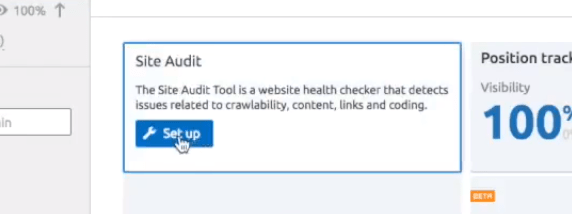
Fill in all the settings and then hit ‘Start Site Audit’
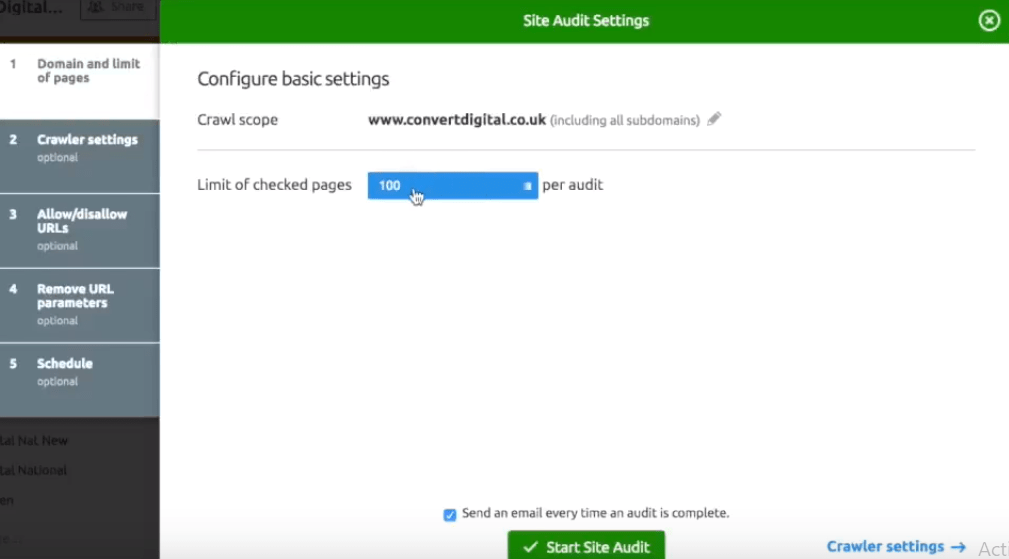
Once complete you will get a list of all the errors, notices and warnings that SEMrush has found, in the issues tab.
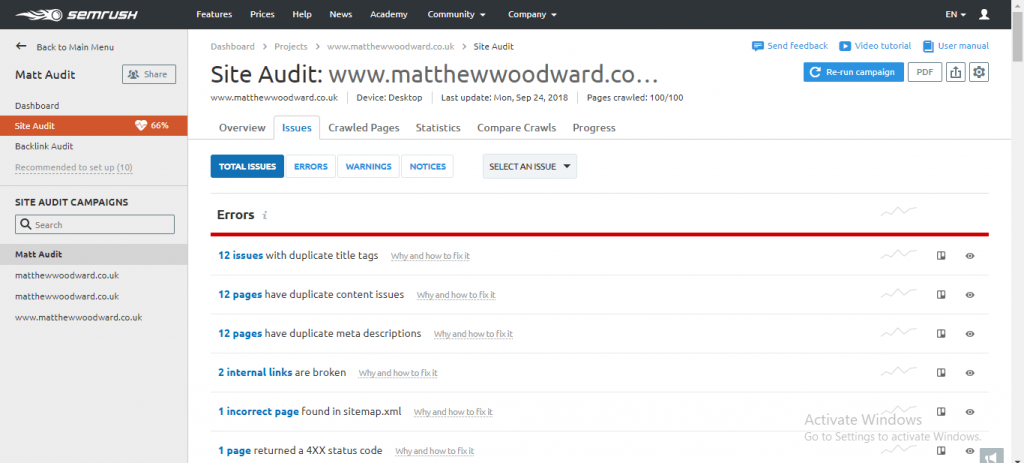
SEMrush is great because it will actually go into more detail about the issue and show you how to then fix the problem.
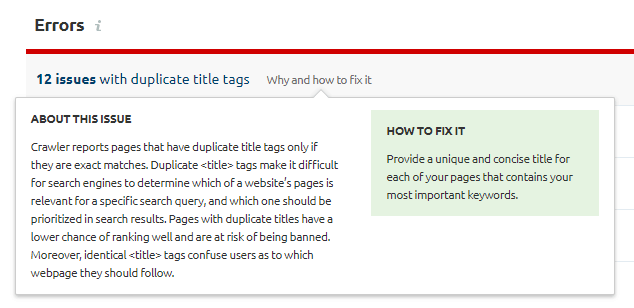
Screaming Frog
Another great tool you can use is Screaming Frog. You can use their free version and crawl up to 500 URLs
Open up the tool and enter your URL. Hit start.
It isn’t as nice to work on as some of the other tools and you will need to do a bit more manual work but it is so much quicker and not to mention… free.
Just work your way through each tab. Make a note of any problems… and then fix them.
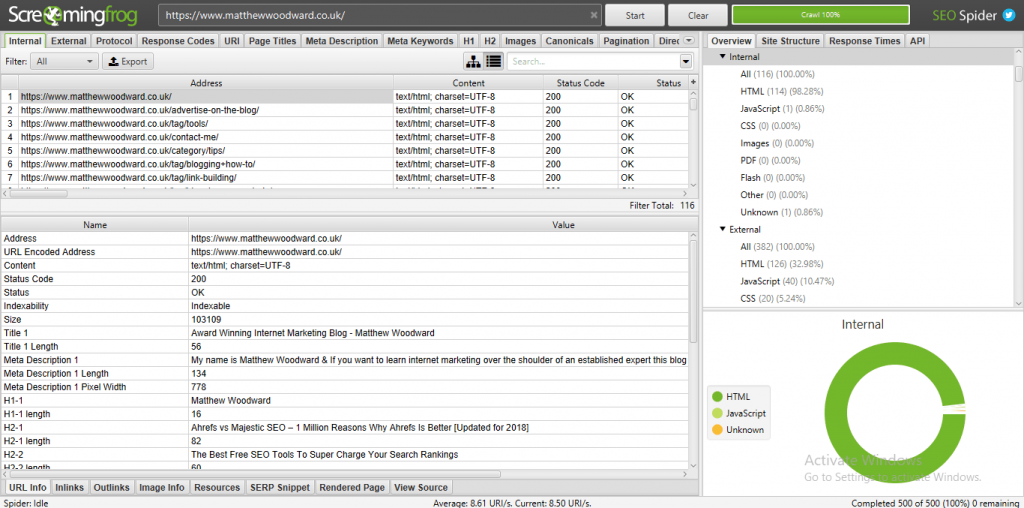
Keyword Research & Optimization
Keyword research is a huge factor when it comes to any type of SEO and needs to be taken very seriously.
You need to make sure you are ranking for keywords that bring in qualified traffic. So if you have an eCommerce store that sells furniture, ideally you want to bring people who know what they want and are ready to buy.
There are 4 factors you need to consider.
- Search volume
- Relevance
- Competition
- Intent
We can start with SEMrush again who has a cool feature called ‘Keyword Difficulty’.
This will show you the top 10 ranking pages for a specific keyword. You can see their domain strength and keyword difficulty.
Enter a keyword into the search bar and click on the ‘Keyword Difficulty’ in the left menu.
You can see the keyword difficulty and to see the top 10 ranking pages just click on the percentage.
You can decide if your store can compete with the sites who currently rank for that keyword. If you decide that you can’t, then SEMrush can show you other opportunities. Just check the Phrase Matches & Related Keywords section.

Repeat the process, remembering that the lower the competition… the quicker you’ll rank!
Once you have chosen those golden keywords you need to make sure you optimize them appropriately in these places:
- Headers
- Subheaders
- URLs
- Page title
- Product descriptions
- Content
- Meta title & description
- Image alt tags
- Image file names
This step will make a massive difference to your online store.
Site Speed
Site speed has a huge impact on what you can earn.
Any eCommerce store that takes 3 or more seconds to load, is losing up to 40% of visitors.
Scary right?!
So just get a quick speed test with GTMetrix to make sure this isn’t you.
As well as seeing your actual speed you will get a list of recommendations that you need to focus on to make your store faster.
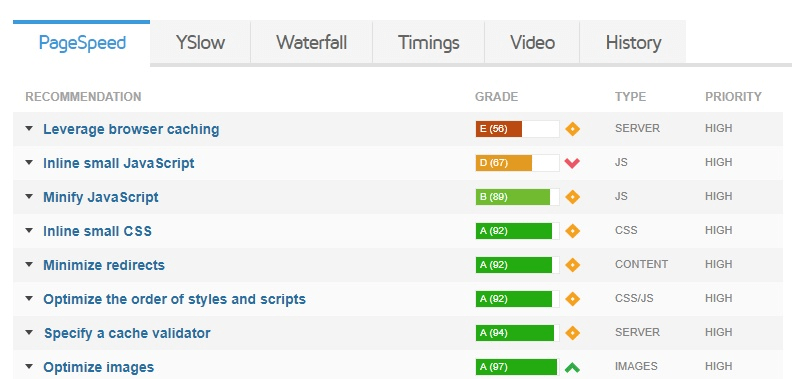
Make sure that you retest every couple of months to keep your eCommerce site as fast as possible.
On-Page SEO
There are certain on-page SEO factors that you need to influence. Let’s take a look at the most important of these:
Content Marketing
By having a blog/resources on your site you can open a whole new level of content marketing. This gives you a wealth of opportunity to drive more traffic to your store.
Write relevant articles that your visitors find helpful and will support your product sales.
Remember with content… it is always about quality, not quantity!
Site Structure
Google crawlers pay close attention to the structure of your site. The simpler the better.
A good rule of thumb to go by is to see whether you can get to your product pages from your homepage within 3 clicks. The easier it is for the search engines (and probably, more importantly, your potential customers) the higher you will rank.
Mobile Version of Website
There’s no ifs and buts anymore when it comes to mobile optimization. If your website isn’t optimized for a mobile, Google won’t bother with it.
And let’s be honest… everyone walks around on their phones most of the time. So why wouldn’t you make your store available to them?
Internal Linking
Internal linking is a really important strategy and the best part about it, is that you have complete control.
You can use them to lower your bounce rate, help Google find and index your new content and use higher authority pages to give new content a boost.
Rich Snippets
Rich Snippets are a fantastic way to indirectly increase your ranking. They make your search result much more appealing and encourage more people to visit your website showing Google how popular your site is.
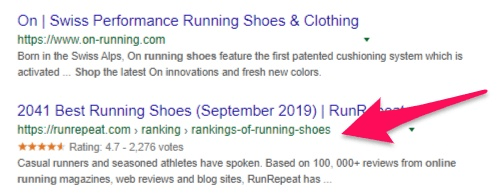
Customer Reviews
Nearly everyone checks reviews of a product or testimonials of services before they invest their money and this can have a massive impact on your conversion rate.
So it is very important that you can provide social proof of the quality of product/service you are offering and get the trust of your potential customers as soon as you can.
Integrating Social Media
Interacting on social media is a valuable tool. Likes, shares, and comments are all an indication to Google that you have something valuable.
You can add social buttons across your website to encourage social interactions.

Link Building
After completing all the above steps, you can now turn your focus onto link building.
You want to build as many natural-looking high-quality links to your high converting pages as possible.
Here are some strategies you can use:
- Stealing competitor backlinks – find your competitors best backlinks and replicate them
- Guest posting – provide high-quality articles to relevant websites with a link placed naturally pointing to your store
- Broken link building – Find broken links on your competitors’ pages and reach out to everyone linking to that page with an alternative link they can use.
- Influencer marketing – Feature some industry experts in a round-up post and ask them to link to the article from their sites.
- Brand mentions – Find any mentions of your brand across the internet and reach out asking the site owner to update it with a link.
- Newsjacking – Keep an ear to the ground for any big news and be the first to create content and attract new visitors to your site.
Wrapping It Up
We have looked at some of the most important SEO factors for any eCommerce store wishing to increase their traffic.
Follow these basic steps and you will start to see your website move upwards in the SERPS.
About the author

Matthew Woodward runs an award-winning SEO blog that publishes detailed case studies and tutorials which focus on helping people build a successful online business. He started his blog in 2012 and since then has helped thousands of people to reach their SEO and marketing goals.

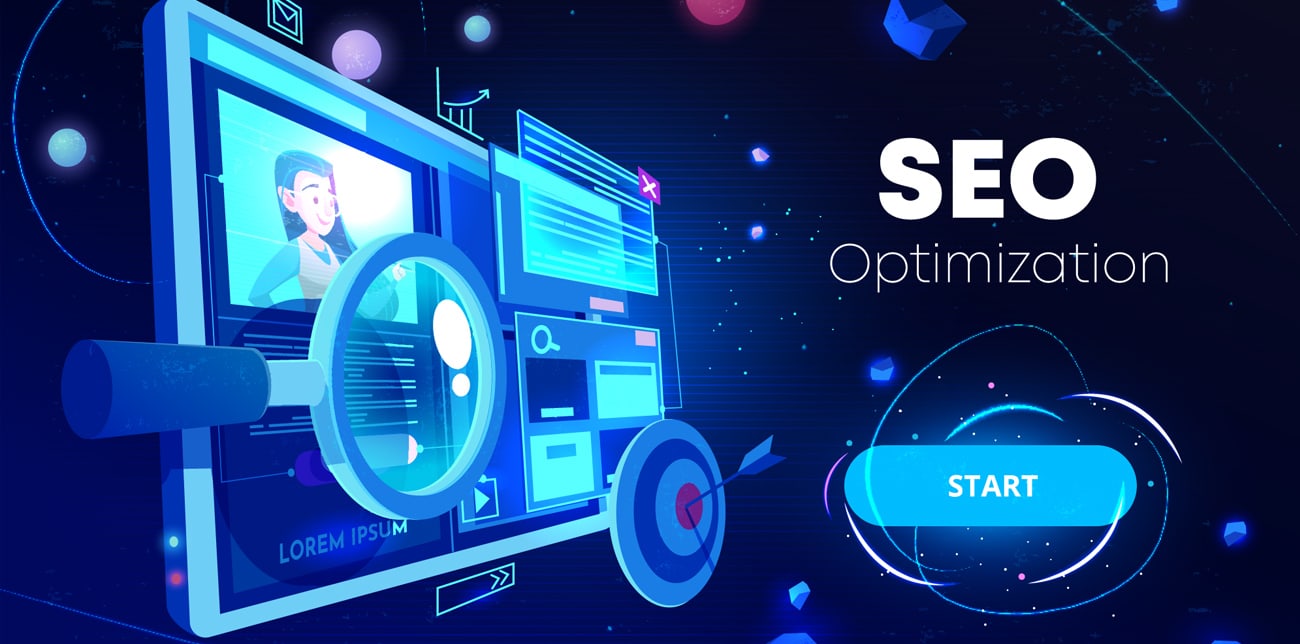

![Benchmarking Growth Strategies of Top Fashion Retailers [Study]](https://blog.contactpigeon.com/wp-content/uploads/2025/11/top-fashion-retailers.jpg)